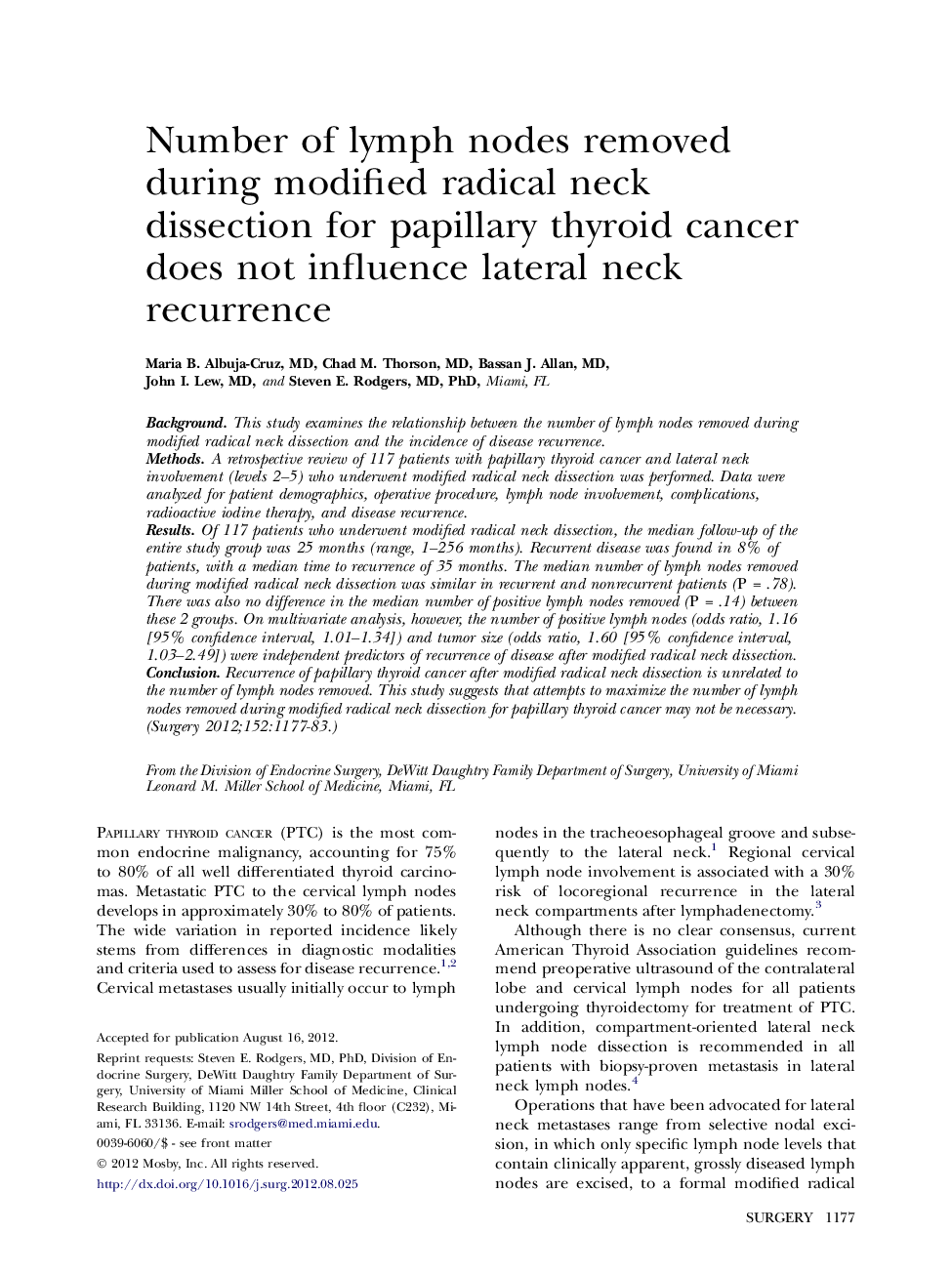| Article ID | Journal | Published Year | Pages | File Type |
|---|---|---|---|---|
| 4307740 | Surgery | 2012 | 7 Pages |
BackgroundThis study examines the relationship between the number of lymph nodes removed during modified radical neck dissection and the incidence of disease recurrence.MethodsA retrospective review of 117 patients with papillary thyroid cancer and lateral neck involvement (levels 2–5) who underwent modified radical neck dissection was performed. Data were analyzed for patient demographics, operative procedure, lymph node involvement, complications, radioactive iodine therapy, and disease recurrence.ResultsOf 117 patients who underwent modified radical neck dissection, the median follow-up of the entire study group was 25 months (range, 1–256 months). Recurrent disease was found in 8% of patients, with a median time to recurrence of 35 months. The median number of lymph nodes removed during modified radical neck dissection was similar in recurrent and nonrecurrent patients (P = .78). There was also no difference in the median number of positive lymph nodes removed (P = .14) between these 2 groups. On multivariate analysis, however, the number of positive lymph nodes (odds ratio, 1.16 [95% confidence interval, 1.01–1.34]) and tumor size (odds ratio, 1.60 [95% confidence interval, 1.03–2.49]) were independent predictors of recurrence of disease after modified radical neck dissection.ConclusionRecurrence of papillary thyroid cancer after modified radical neck dissection is unrelated to the number of lymph nodes removed. This study suggests that attempts to maximize the number of lymph nodes removed during modified radical neck dissection for papillary thyroid cancer may not be necessary.
